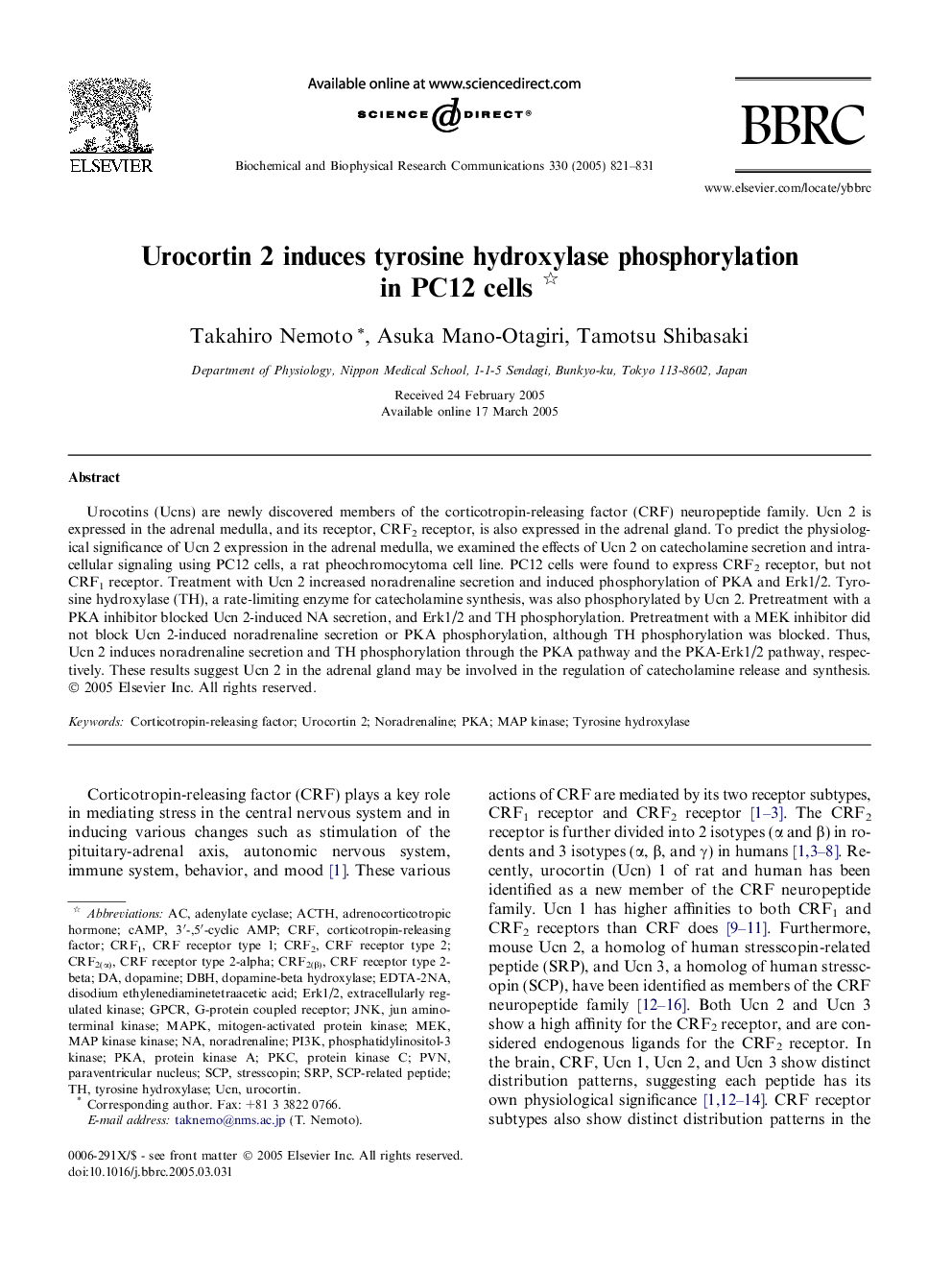| Article ID | Journal | Published Year | Pages | File Type |
|---|---|---|---|---|
| 10770275 | Biochemical and Biophysical Research Communications | 2005 | 11 Pages |
Abstract
Urocotins (Ucns) are newly discovered members of the corticotropin-releasing factor (CRF) neuropeptide family. Ucn 2 is expressed in the adrenal medulla, and its receptor, CRF2 receptor, is also expressed in the adrenal gland. To predict the physiological significance of Ucn 2 expression in the adrenal medulla, we examined the effects of Ucn 2 on catecholamine secretion and intracellular signaling using PC12 cells, a rat pheochromocytoma cell line. PC12 cells were found to express CRF2 receptor, but not CRF1 receptor. Treatment with Ucn 2 increased noradrenaline secretion and induced phosphorylation of PKA and Erk1/2. Tyrosine hydroxylase (TH), a rate-limiting enzyme for catecholamine synthesis, was also phosphorylated by Ucn 2. Pretreatment with a PKA inhibitor blocked Ucn 2-induced NA secretion, and Erk1/2 and TH phosphorylation. Pretreatment with a MEK inhibitor did not block Ucn 2-induced noradrenaline secretion or PKA phosphorylation, although TH phosphorylation was blocked. Thus, Ucn 2 induces noradrenaline secretion and TH phosphorylation through the PKA pathway and the PKA-Erk1/2 pathway, respectively. These results suggest Ucn 2 in the adrenal gland may be involved in the regulation of catecholamine release and synthesis.
Related Topics
Life Sciences
Biochemistry, Genetics and Molecular Biology
Biochemistry
Authors
Takahiro Nemoto, Asuka Mano-Otagiri, Tamotsu Shibasaki,
